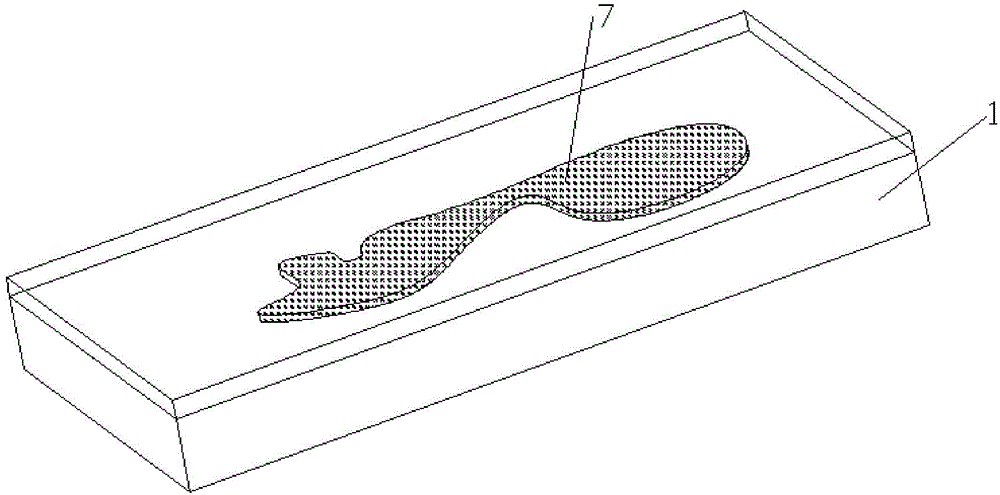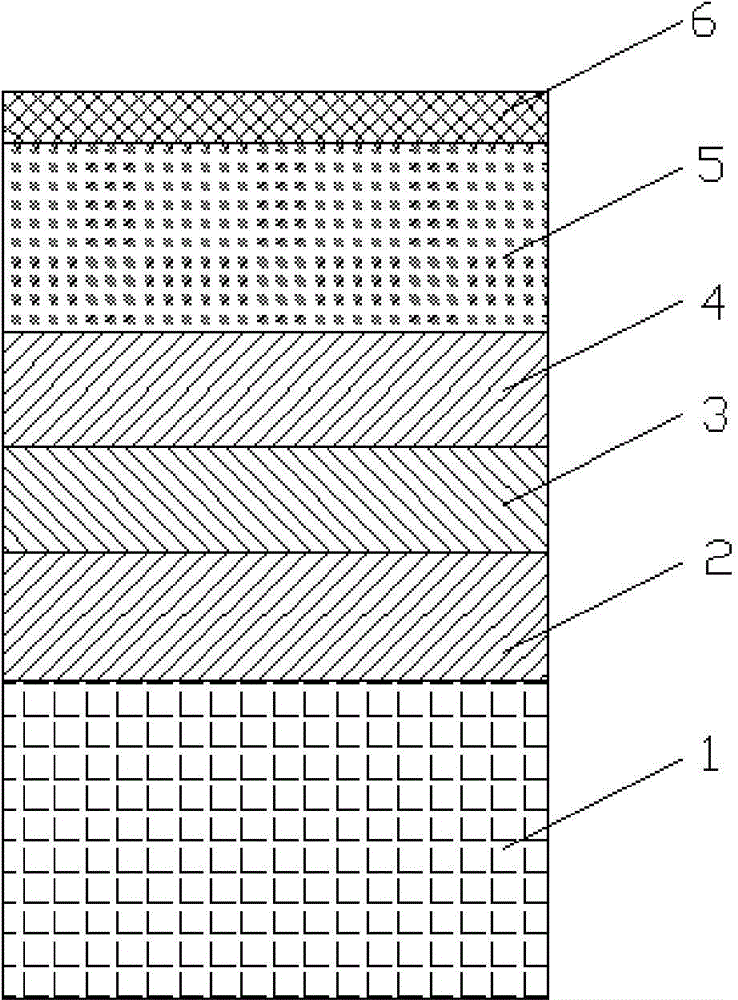A three-dimensional paint process for furniture screen printing and internal carving
A technology for silk screen printing and furniture, applied in polyurea/polyurethane coatings, special surfaces, devices for coating liquids on surfaces, etc. Effect
- Summary
- Abstract
- Description
- Claims
- Application Information
AI Technical Summary
Problems solved by technology
Method used
Image
Examples
Embodiment 1
[0039] Embodiment 1: see Figure 1 ~ Figure 2 , the three-dimensional painting process for furniture screen printing and internal carving provided in this embodiment, which includes the following steps,
[0040](1) Soil filling: After setting the thickness of the surface of the furniture product 1 to be processed with a large-scale thickness-setting sander, a layer of putty is applied on the outer surface, and then polished and cleaned with coarse sandpaper to obtain the base layer 2 ;
[0041] (2) Spraying nano-sealing primer and polishing: evenly sweep the nano-primer on the surface of the product 1, and after the nano-primer is air-dried for 42 to 52 hours, polish and sand with coarse sandpaper to obtain the sealing primer layer 3 ;
[0042] (3) Spray PE primer: Spray the PE primer evenly on the sealing primer layer 3 in two to four times. After the PE primer is air-dried for 30 to 40 hours, sand the surface with sandpaper to obtain the upper bottom. paint layer 4;
[0...
Embodiment 2
[0061] Embodiment 2: The basic steps of this embodiment are the same as in Embodiment 1, and its difference is that the preparation method of the PU topcoat also includes the following steps:
[0062] (51) In a four-necked flask equipped with a stirrer, a thermometer, a condenser and a dropping funnel, measure the components according to the following molar ratios, toluene diisocyanate 2: polyether diol 3: 1,4-butyl Diol 3: 2,2-dimethylol propionic acid 3: epoxy resin 4: hydroxypropyl acrylate 2: triethylamine 1: nano glass beads 3: pearl powder 1.5, toluene diisocyanate and polyether two Add the alcohol into the reaction system, drop the catalyst dibutyltin dilaurate, first react at 40°C for 30min, then raise the temperature to 80°C, and react at constant temperature for 1.5h;
[0063] (52) Cool down to 70°C, weigh 1,4-butanediol according to step (51), slowly add small molecule chain extender 1,4-butanediol dropwise with a dropping funnel, and keep the temperature for 50 min...
Embodiment 3
[0069] Embodiment 3: The basic steps of this embodiment are the same as in Embodiment 1, and its difference is that the preparation method of the PU topcoat also includes the following steps:
[0070] (51) In a four-necked flask equipped with a stirrer, a thermometer, a condenser and a dropping funnel, measure the components according to the following molar ratios, toluene diisocyanate 10: polyether diol 6: 1,4-butyl Diol 4: 2,2-dimethylol propionic acid 4: epoxy resin 3: hydroxypropyl acrylate 3: triethylamine 1.5: nano glass beads 4: pearl powder 2, toluene diisocyanate and polyether two Add the alcohol into the reaction system, drop the catalyst dibutyltin dilaurate, first react at 40°C for 30min, then raise the temperature to 80°C, and react at constant temperature for 1.5h~2h;
[0071] (52) Cool down to 75°C, weigh 1,4-butanediol according to step (51), slowly add small molecule chain extender 1,4-butanediol dropwise with a dropping funnel, and keep the temperature for 70...
PUM
| Property | Measurement | Unit |
|---|---|---|
| thickness | aaaaa | aaaaa |
| thickness | aaaaa | aaaaa |
| thickness | aaaaa | aaaaa |
Abstract
Description
Claims
Application Information
 Login to View More
Login to View More - R&D
- Intellectual Property
- Life Sciences
- Materials
- Tech Scout
- Unparalleled Data Quality
- Higher Quality Content
- 60% Fewer Hallucinations
Browse by: Latest US Patents, China's latest patents, Technical Efficacy Thesaurus, Application Domain, Technology Topic, Popular Technical Reports.
© 2025 PatSnap. All rights reserved.Legal|Privacy policy|Modern Slavery Act Transparency Statement|Sitemap|About US| Contact US: help@patsnap.com


